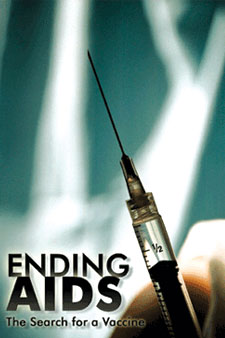|
|
TRIIVIR contains abacavir sulfate, which
has been associated with serious and sometimes fatal
hypersensitivity reactions.
* Is 3 NRTIs in 1 tablet
* Is administered 1 tablet BID, with or without food
* May be used in combination with other antiretrovirals or alone
* May help preserve future treatment options with PIs, NNRTIs, and
other NRTIs
TRIIVIR is indicated in combination with other antiretrovirals or
alone for the treatment of HIV-1 infection.
* TRIIVIR is one of multiple products containing abacavir. Before
starting TRIIVIR, review medical history for prior exposure to any
abacavir-containing product in order to avoid reintroduction in a
patient with a history of hypersensitivity to abacavir
* Limited data exist on the use of TRIIVIR alone in patients with
higher baseline viral load levels (>100,000 copies/mL)
* TRIIVIR is intended only for patients whose regimen would
otherwise include its 3 components. Because it is a fixed-dose
tablet, TRIIVIR should not be prescribed for adults or adolescents
who weigh less than 40 kg or other patients requiring dosage
adjustment
Composition
(abacavir sulfate, lamivudine, and zidovudine)
Each tablet contains
abacavir sulfate ...............300 mg
lamivudine ................. 150 mg
zidovudine .................. 300 mg
Indication and Usage
TRIIVIR treats HIV infection in combination with other HIV
medicines or alone. HIV medicines do not cure HIV infection/AIDS
or prevent passing HIV to others.
* TRIIVIR is used in combination with other HIV medicines, or
alone, for the treatment of HIV infection. TRIIVIR is a
combination of three medicines: ZIAGEN® (abacavir sulfate), EPIVIR®
(lamivudine or 3TC), and RETROVIR® (zidovudine, or ZDV). If you
weigh less than 90 pounds, you should not take TRIIVIR because it
may be too much medicine for your body to handle
* TRIIVIR is one of several medicines containing abacavir. Before
you start taking TRIIVIR, review your medical history with your
healthcare professional to make sure you have not had a severe
allergic reaction to abacavir in the past
* There is limited information on the use of this
triple-combination therapy in patients with viral loads >100,000
c/mL. Talk to your healthcare professional about whether TRIIVIR
might be right for you
IMPORTANT SAFETY INFORMATION
Hypersensitivity Reaction (HSR)
TRIIVIR contains abacavir sulfate, which has been associated with
serious and sometimes fatal hypersensitivity reactions.
Hypersensitivity to abacavir is a multi-organ clinical syndrome
usually characterized by a sign or symptom in 2 or more of the
following groups:
Symptom(s)
Group 1 Fever
Group 2 Rash
Group 3 Nausea, vomiting, diarrhea, or abdominal (stomach area)
pain
Group 4 Generally ill feeling, extreme tiredness, or achiness
Group 5 Shortness of breath, cough, or sore throat
* Discontinue TRIIVIR as soon as a hypersensitivity reaction is
suspected. Permanently discontinue TRIIVIR if hypersensitivity
cannot be ruled out, even when other diagnoses are possible
* Following a hypersensitivity reaction to abacavir, NEVER restart
TRIIVIR or any other abacavir-containing product because more
severe symptoms can occur within hours and may include
life-threatening hypotension and death
* Re-introduction of TRIIVIR or any other abacavir-containing
product, even in patients who have no identified history or
unrecognized symptoms of hypersensitivity to abacavir therapy, can
result in serious or fatal hypersensitivity reactions. Such
reactions can occur within hours
Management
* When HSR is suspected, discontinue therapy with TRIIVIR
* DO NOT RE-CHALLENGE IF HYPERSENSITIVITY CANNOT BE RULED OUT
o Abacavir should not be restarted following a hypersensitivity
reaction because more severe symptoms can recur within hours and
may include life-threatening hypotension and death
* To avoid a delay in diagnosis and minimize the risk of a
life-threatening hypersensitivity reaction, TRIIVIR should be
permanently discontinued if hypersensitivity cannot be ruled out,
even when other diagnoses are possible (eg, acute onset
respiratory diseases, gastroenteritis, or reactions to other
medications)
Other Important Safety Information
Zidovudine has been associated with hematologic toxicity including
neutropenia and severe anemia, particularly in patients with
advanced HIV disease. Prolonged use of zidovudine has been
associated with symptomatic myopathy.
Lactic acidosis and severe hepatomegaly with steatosis, including
fatal cases, have been reported with the use of nucleoside
analogues alone or in combination, including abacavir, lamivudine,
zidovudine, and other antiretrovirals.
TRIIVIR Tablets are contraindicated in patients with hepatic
impairment.
Severe acute exacerbations of hepatitis B have been reported in
patients who are co-infected with hepatitis B virus (HBV) and HIV
and have discontinued lamivudine, which is one component of
TRIIVIR. Hepatic function should be monitored closely with both
clinical and laboratory follow-up for at least several months in
patients who discontinue TRIIVIR and are co-infected with HIV and
HBV. If appropriate, initiation of anti-hepatitis B therapy may be
warranted.
Hepatic decompensation (some fatal) has occurred in HIV/HCV
co-infected patients receiving combination antiretroviral therapy
for HIV and interferon with or without ribavirin. Patients
receiving interferon with or without ribavirin and TRIIVIR should
be closely monitored for treatment-associated toxicities,
especially hepatic decompensation, neutropenia, and anemia.
Discontinuation of TRIIVIR should be considered as medically
appropriate.
Immune reconstitution syndrome has been reported in patients
treated with combination antiretroviral therapy, including TRIIVIR.
During the initial phase of combination antiretroviral treatment,
patients whose immune system responds may develop an inflammatory
response to indolent or residual opportunistic infections (such as
Mycobacterium avium infection, cytomegalovirus, Pneumocystis
jirovecii pneumonia [PCP], or tuberculosis), which may necessitate
further evaluation and treatment.
Redistribution/accumulation of body fat including central obesity,
dorsocervical fat enlargement (buffalo hump), peripheral wasting,
facial wasting, breast enlargement, and "cushingoid appearance"
have been observed in patients receiving antiretroviral therapy.
The mechanism and long-term consequences of these events are
currently unknown. A causal relationship has not been established.
The most common adverse events (≥5% Grades 2-4) were nausea (19%),
headache (13%), malaise and fatigue (12%), nausea and vomiting
(10%), hypersensitivity reaction (8%), diarrhea (7%), fever and/or
chills (6%), depressive disorders (6%), musculoskeletal pain (5%),
skin rashes (5%), ear/nose/throat infections (5%), viral
respiratory infections (5%), and anxiety (5%).
Presentation
TRIIVIR KIT
|



